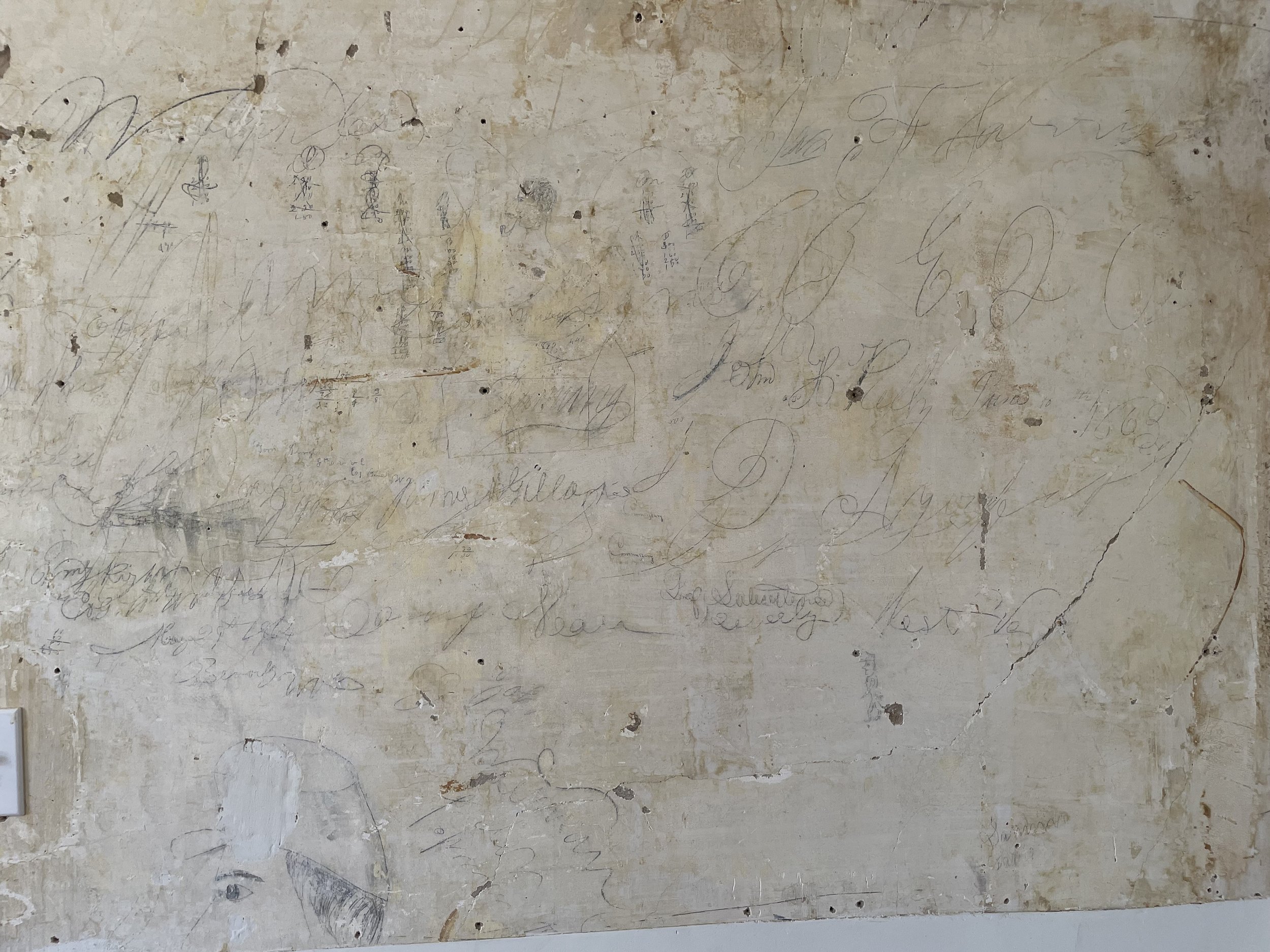By Sammy Ryder
Serving with the Beverly Heritage Center
I recently had the opportunity to participate in a plaster stabilization workshop at my service site, the Beverly Heritage Center. Chris Mills, a plaster expert, came to work on the second floor of the Crawford Building, which served as McClellan’s headquarters in Beverly. I worked with him for a few days learning about how to stabilize plaster and the proper way to uncover Civil War era graffiti.
The first thing we went over was safety and how even though lead remediation was conducted years earlier, proper safety protocol is still needed when working in old buildings. He gave me a heavy-duty respirator system which I wore through the duration of the workshop. We went over how to clean and care for a respirator system and what kind of filters are appropriate when working with different materials. This is a crucial step to ensure that everyone in the work environment is safe. Afterwards, we went through the best way to remove the paint, wallpaper, and adhesive materials that were obstructing the graffiti. I learned that the safest way to remove debris is to dampen a piece of cotton and stick it onto a section of wallpaper. Once sufficiently dampened, everything comes off much easier.
It was fascinating to watch the process of stabilizing the fractured sections of plaster wall. Even after a few minutes the fractured section of the wall was noticeably more stable. An interesting fact that I learned was that a lot of the tools that were used were medical equipment like small scalpels and syringes. Small tools really help get the paint from around the finer details of the graffiti. It takes a lot of small, delicate movements with the scalpel to remove the paint from overtop the plaster. It also takes some practice to know what section of the wall is plaster or paint.
Office of W. H. McGune Esq.
It was exciting to scrape off each layer of adhesive and paint because you didn’t know what you were going to uncover. I felt like a detective trying to decipher the writing that in the beginning looked almost like a coded message. The more graffiti I looked at, the less it looked like code and the more I started to see people's stories. It was incredible to be able to expose graffiti that might not have been seen for over a hundred years. The most interesting pieces of graffiti were the ones that mentioned Beverly specifically or had people’s names written. There was everything from drawings of soldiers, poems, and math calculations. Our working hypothesis is that these math problems are from soldiers trying to calculate their pay. I uncovered a piece of graffiti that said, “Office of W. H. McGune Esq.” I found myself wondering who W.H. McGune was and what he was experiencing when he wrote this message. I quickly looked at the Soldiers and Sailors database and found some men with the same name as the names written on the wall. They were from an Ohio Regiment and some Ohio regiments were in Beverly.
I’m fortunate enough that I get to play an active role in the preservation of Beverly’s history. It is truly amazing to be able to uncover and share new facets of Beverly’s history. Beverly W. VA has a wealth of history, and I am proud to do my part in preserving and sharing that history.



